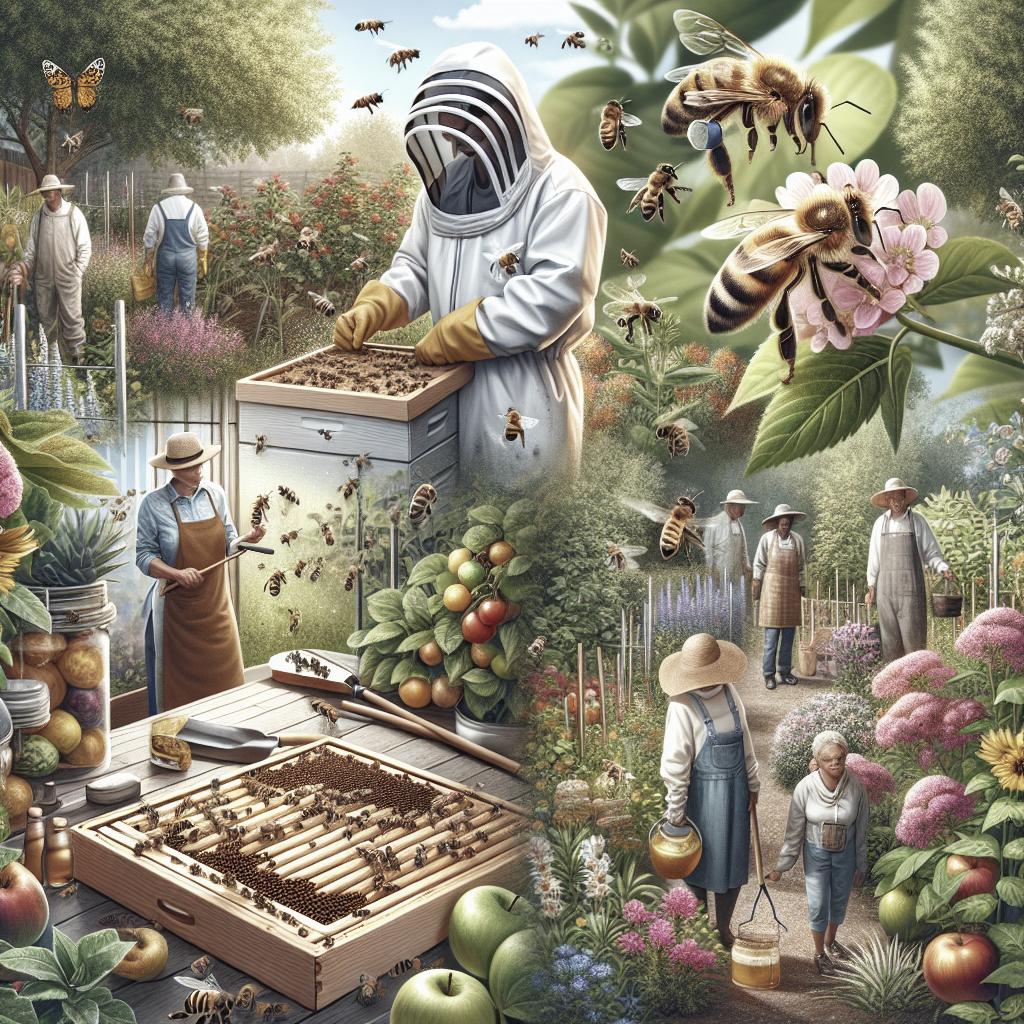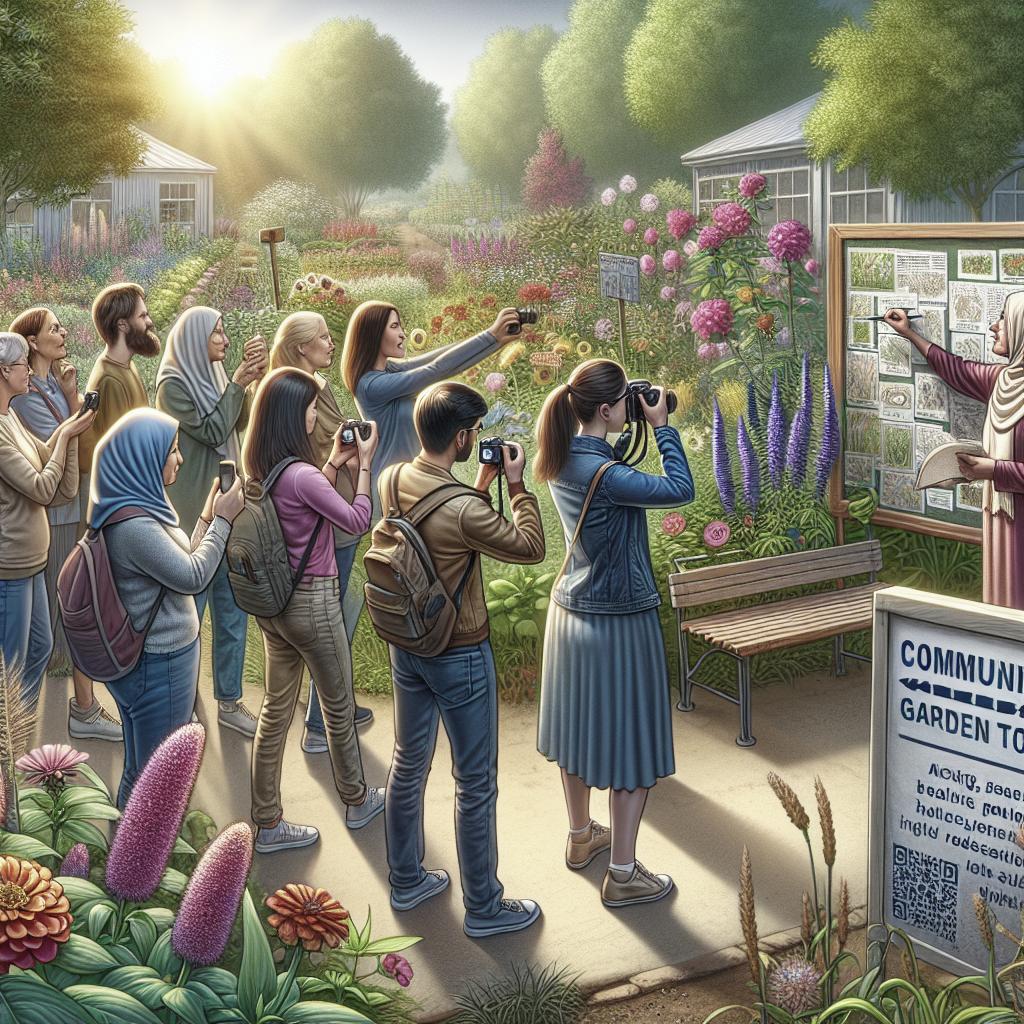Bees are crucial for a healthy ecosystem, acting as essential pollinators for many plants. Bee populations have been declining, which makes it more important than ever to support these vital creatures. Community gardens serve as excellent sites for beehives, providing them with essential sustenance while boosting your garden’s productivity. This blog post delves into best practices for maintaining healthy bees and beehives in community gardens. From cleanliness, equipment maintenance, and adequate water supply to planting flowers and regular inspections, each aspect plays a crucial role in successful beekeeping.
Clean Hives and Equipment
Keeping hives clean is one of the first and most crucial steps to ensuring the health and productivity of your bees. Dirty hives can harbor pathogens and parasites that could devastate a colony in a short period. Regular cleaning removes buildups of wax, propolis, and other materials that could impede the hive’s efficiency or serve as a breeding ground for harmful organisms.
Adopt a cleaning schedule based on the season and activities of your bees. After the nectar flow, for instance, is an excellent time to conduct a thorough cleaning. Migratory beekeepers, those who move hives seasonally for pollination services, often clean hives during these transitions to maintain hive health.
Keep apiary equipment clean
Beyond the hive itself, keeping all beekeeping equipment clean helps prevent the spread of diseases. Whether you are using hive tools, smokers, hive scrapers, or brushes, every piece of equipment should be sanitized regularly. A solution of bleach and water is often sufficient to clean metal tools and other non-wooden items, while wooden components can be scrubbed and left to dry in the sun.
Disinfection processes can vary; some beekeepers opt for commercial disinfectants designed for apiaries, but homemade solutions can also be effective. Regular maintenance ensures not just the health of one hive but also the broader community of bees by limiting cross-contamination risks.
Provide water for a hydrated hive
Like all living creatures, bees need water to survive. A well-hydrated hive is crucial for several vital functions, such as temperature regulation and digestion. Installing a water source near the hive is essential, especially during hot and dry spells when natural water sources may become scarce.
Furnish a shallow dish with pebbles or corks in it to prevent drowning and place it near the hive. Bees can navigate wet surfaces more efficiently when the water level is shallow. Regularly refresh the water to avoid stagnation and mosquito breeding. An effective watering system can make a significant difference in the wellbeing of your bee colony.
Plant lots of flowers
Bees need access to diverse foraging options, and planting a variety of flowers in your community garden can ensure they get the nutrition required for a robust colony. Aim for a mix of plants that bloom at different times of the year, providing continuous food sources from early spring through late fall.
Choose native plants, which are more likely to thrive and provide the nectar and pollen that local bee populations have adapted to over generations. Sunflowers, daisies, and lavender are great choices, along with herbs like mint, basil, and thyme. A diverse garden isn’t just visually appealing; it’s also a buffet for your bees.
Let the air flow
Ventilation is another crucial factor in maintaining a healthy hive. Proper airflow helps regulate temperature and humidity, preventing the growth of mold and the spread of diseases. Ensure that your hives have adequate ventilation by positioning them properly and using screened bottom boards or top entrances for better air circulation.
During hotter months, consider placing your hives in shaded areas or using hive covers to prevent overheating. Good airflow will also aid bees in managing moisture levels within the hive, a particularly crucial feature during the high-humidity periods.
Expand the hive when necessary
A thriving bee colony will eventually outgrow its initial hive, prompting the need for expansion. Adding more frames or another box to the hive provides more space for the colony to grow, prevents overcrowding, and reduces the likelihood of swarming, where a portion of the bees leave to start a new colony.
Monitor the hive regularly to understand when expansion is necessary. Signs like bees clustering outside the hive, stuffed entranceways, or a lack of space for new comb construction indicate that it’s time to add hive components. Proper timing ensures that your bees have the room they need to thrive.
Inspect regularly and stay alert
Regular inspections are an essential component of successful beekeeping. At least once a month, check for signs of disease, pests, and the general health of the hive. Look for changes in bee behavior, population size, and the status of the queen. These factors can provide insights into the overall condition of the colony and help you identify potential issues before they become significant problems.
Stay current with the latest research and best practices in beekeeping. Follow expert advice and engage with the beekeeping community through forums, workshops, and conferences. The world of beekeeping is always evolving, and staying informed can help you adapt your practices for the benefit of your bees and community garden.
Share this:
If you found this article helpful, share it with your community gardeners and fellow beekeepers. Together, we can create thriving ecosystems for our essential pollinators.
| Topic | Description |
|---|---|
| Clean Hives and Equipment | Regular cleaning to remove pathogens and debris, including post-nectar flow clean-ups. |
| Keep apiary equipment clean | Sanitize hive tools and other equipment with bleach solutions or commercial disinfectants. |
| Provide water for a hydrated hive | Install shallow water dishes with pebbles or corks to prevent drowning and refresh water regularly. |
| Plant lots of flowers | Plant a variety of flowers that bloom at different times to provide continuous food sources. |
| Let the air flow | Ensure proper ventilation to regulate temperature and humidity, using shaded areas and screened bottom boards. |
| Expand the hive when necessary | Add frames or boxes to prevent overcrowding and swarming when the colony grows. |
| Inspect regularly and stay alert | Conduct monthly inspections for diseases, pests, and hive health. Stay updated with beekeeping best practices. |


